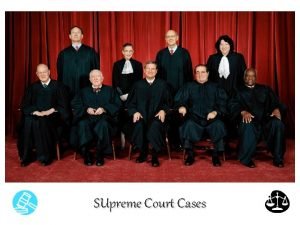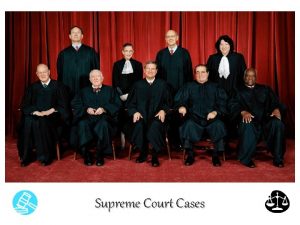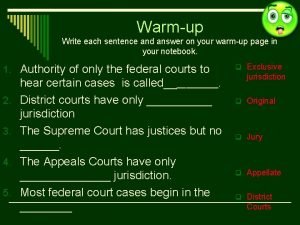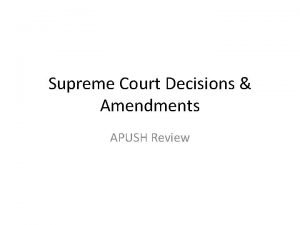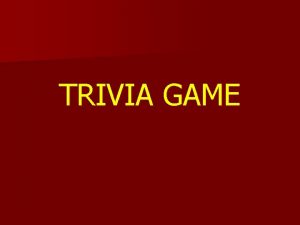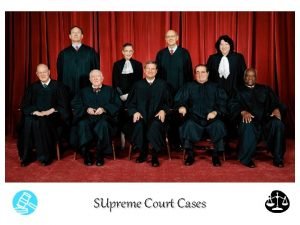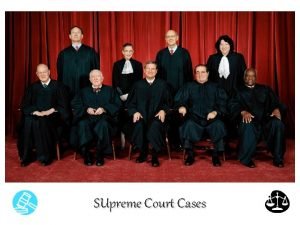THE SUPREME COURT AT WORK PROCEDURES HOW CASES






- Slides: 6

THE SUPREME COURT AT WORK PROCEDURES, HOW CASES REACH THE COURT & STEPS IN DECIDING CASES

COURT’S PROCEDURES • Court in continuous session – Originally only 9 months • Sits for 2 consecutive weeks a month • Mon-Weds: hear oral arguments • Weds & Fri meet in secret conferences to decide cases • Other 2 weeks: work on paperwork & opinions

HOW A CASE REACHES THE COURT • Writ of Certiorari: either side petitions that a lower court’s decision involved an error raising a serious constitutional issue • order from the court to a lower court to send up the records on a case for review • On Appeal • The Solicitor General: appointed by the President and represents the Government – Determines whether the federal gov’t should appeal Donald Verilli, Jr.

SELECTING CASES • Chief justice puts worthy cases on a “discuss list” • 2/3 of all cert cases never make it to the list • Some cases are decided by a brief known as a per curiam opinion – Brief, unsigned statement of the SC’s decision • The rest are given the Court’s full consideration

STEPS IN DECIDING CASES • Each side submits a brief detailing legal arguments, facts & precedents • Parties not directly involved in the case but with an interest may submit amicus curiae briefs (“friends of the court”) • Lawyers on each side are allowed 30 minutes to make oral arguments • The Conference: Weds & Fri justices meet to discuss the case – Due to heavy case load debate usually lasts just 30 minutes a case

WRITING THE OPINION • Each justice has 1 vote and a majority is needed to decide the case 4 Types of Opinions 1. Unanimous Opinion 2. Majority Opinion 3. Concurring Opinion 4. Dissenting opinion • If the Chief justice agrees with the majority, he assigns the justice in the majority to write the opinion • If NOT, the most senior justice assigns the task
